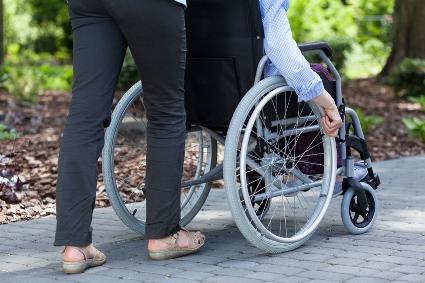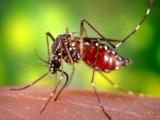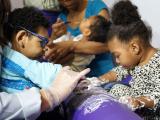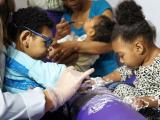A case-control study involving dozens of people who developed Guillain-Barre syndrome (GBS) after French Polynesia's 2013-14 Zika virus outbreak revealed a strong connection between the two conditions, along with key information that could help countries handle what could be an onslaught of new cases.
The study also yielded fresh clues about the role of Zika virus in the physiology of GBS, a neurologic condition. A research team led by experts from French Polynesia and the Pasteur Institute published their findings late yesterday in an early online edition of The Lancet.
Several case reports have built a growing evidence base about the link between Zika and microcephaly, the more serious complication on the global health radar that involves small head size. Until now, though, health officials have had little published evidence of a link between the virus and GBS, other than that it can occur after other types of infections and that clusters have reported in eight Zika-hit countries or territories.
Thought to be an autoimmune disorder that damages nerve cells, GBS causes muscle weakness and sometimes paralysis. Most people recover, but some have lingering nerve damage. The condition seems to be more common in adult men and can occur within a couple weeks of infection.
Symptoms severe, but recovery quick
Researchers centered their investigation on 42 patients who were diagnosed as having GBS from October 2013 to April 2014, during French Polynesia's Zika outbreak. They compared those patients' clinical and lab profiles with two matched control groups—one containing 98 people who sought hospital care for nonfebrile illnesses and the other including 70 Zika virus patients who didn't experience GBS complications.
Blood tests confirmed Zika infections in all GBS patients, with a median time between Zika virus infection and neurologic symptoms of 6 days and 88% experiencing symptoms. Only 56% of the patients in the first control group had neutralizing antibodies against the virus.
Electrophysiological testing revealed that the Zika-linked GBS patients had a form of the illness that causes acute axonal nerve damage, a different profile than seen with GBS cases in Europe. A puzzling finding was that although French Polynesia's cases fit the acute motor axonal neuropathy (AMAN) type of GBS, they lacked the antibody profile usually seen with AMAN.
Sixteen people required intensive care unit treatment, with 12 of them needing respiratory assistance. None of them died.
Encouragingly, the authors found that patients recovered fairly quickly, with about half of them able to walk without help at about 3 months. Based on the assumption that two thirds of French Polynesia's population was infected during the Zika virus outbreak, researchers put the overall risk of developing GBS at 2.4 for every 10,000 people infected with the virus.
Also reassuring was that the researchers didn't find any evidence that earlier dengue infection led to more severe complications with Zika virus infection.
Compelling answers, but questions remain
In a commentary in the same Lancet issue, two Australian experts said that the findings are convincing. "Suffice to say Zika virus can be added to our list of viruses that can cause Guillain-Barre syndrome, and investigation of these cases should include tests for Zika when there is a possibility of infection by that virus," they wrote.
The authors are David Smith, MBBS, from University of Western Australia, and John Mackenzie, PhD, from Curtin University.
A better understanding, however, is needed of the pathogenesis of GBS in Zika virus patients, the two wrote. They added that the increased GBS rates the researchers found should be verified to ensure that they don't reflect increased reporting. They also cautioned that it's not known if the current strain of Zika virus in the Americas is the same or will behave the same way in a different population.
Michael Osterholm, PhD, MPH, director of the University of Minnesota's Center for Infectious Disease Research and Policy (CIDRAP), said the well-conducted study answers important questions—such as the link to Zika and apparently only Zika—and raises additional ones.
He said the study should put to rest any question of a link between Zika virus and GBS. CIDRAP is publisher of CIDRAP News.
Osterholm added that the lack of the expected antibody profile in the GBS patients could mean that another type of antibody activity is occurring that scientists haven't measured yet or could point to a direct cytotoxic effect of the virus. A mechanism involving direct damage, rather than antibody-related damage, could provide a smoother path for a vaccine against Zika virus, Osterholm said, noting that one of the concerns about vaccine development has been the risk of GBS as a side effect of vaccination.
Osterholm said another important aspect of the study is that it gives health officials a rough back-of-the-envelope guide to intensive care needs, including that 20% to 30% of GBS patients may need mechanical ventilation. "That could outstrip capacity that would be likely in the Americas. The warning in the study abstract is right on the mark."
Arnaud Fontanet, DrPH, one of the study coauthors, said in a Pasteur Institute news release today, "This indicates that the regions which are affected by the Zika virus epidemic are likely to see a significant increase in the number of patients with serious neurological complications, and when possible, should increase the capacity of healthcare facilities to receive patients needing intensive care."
See also:
Feb 29 Lancet report
Feb 29 Lancet commentary
Mar 1 Pasteur Institute press release




















